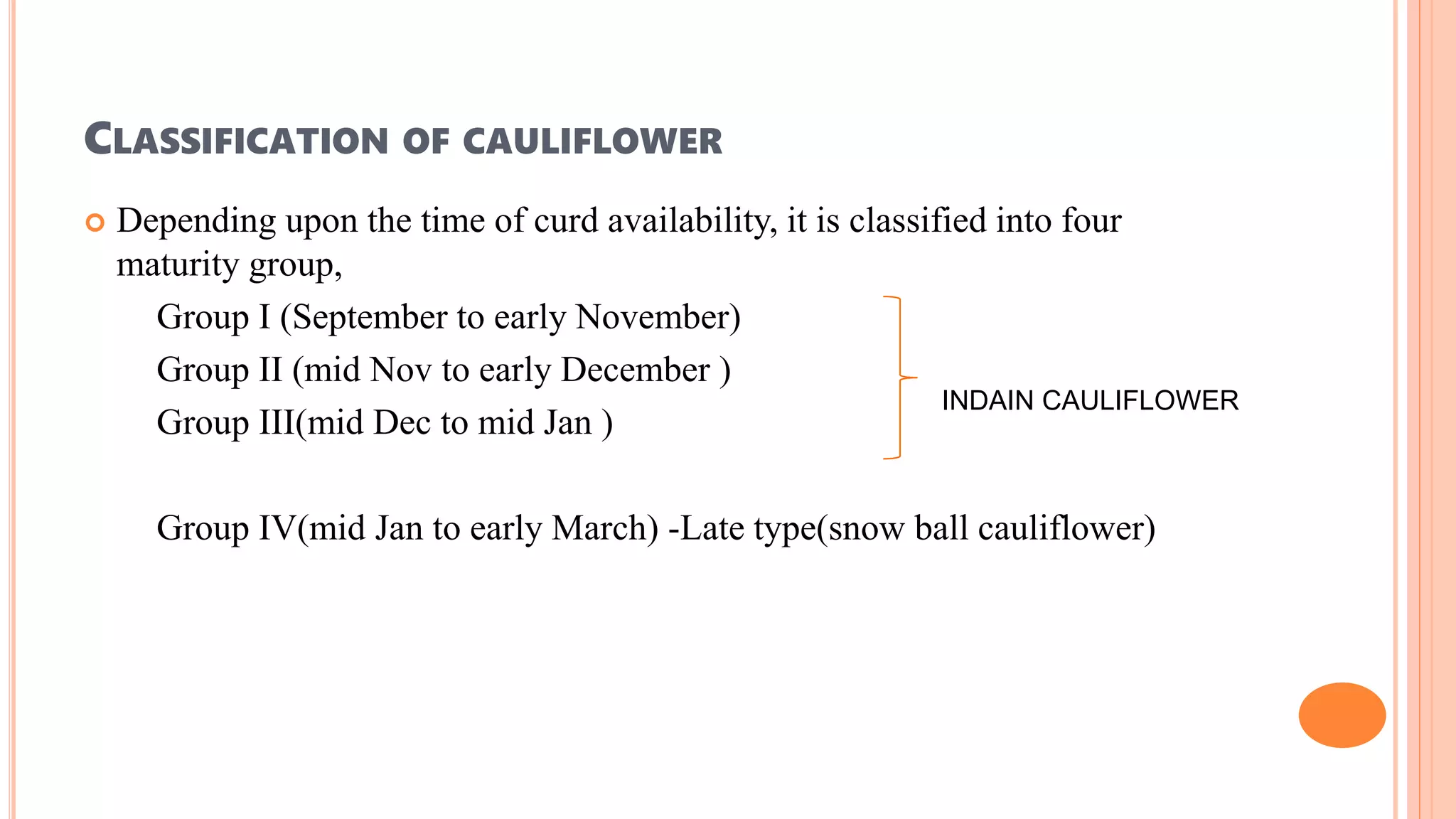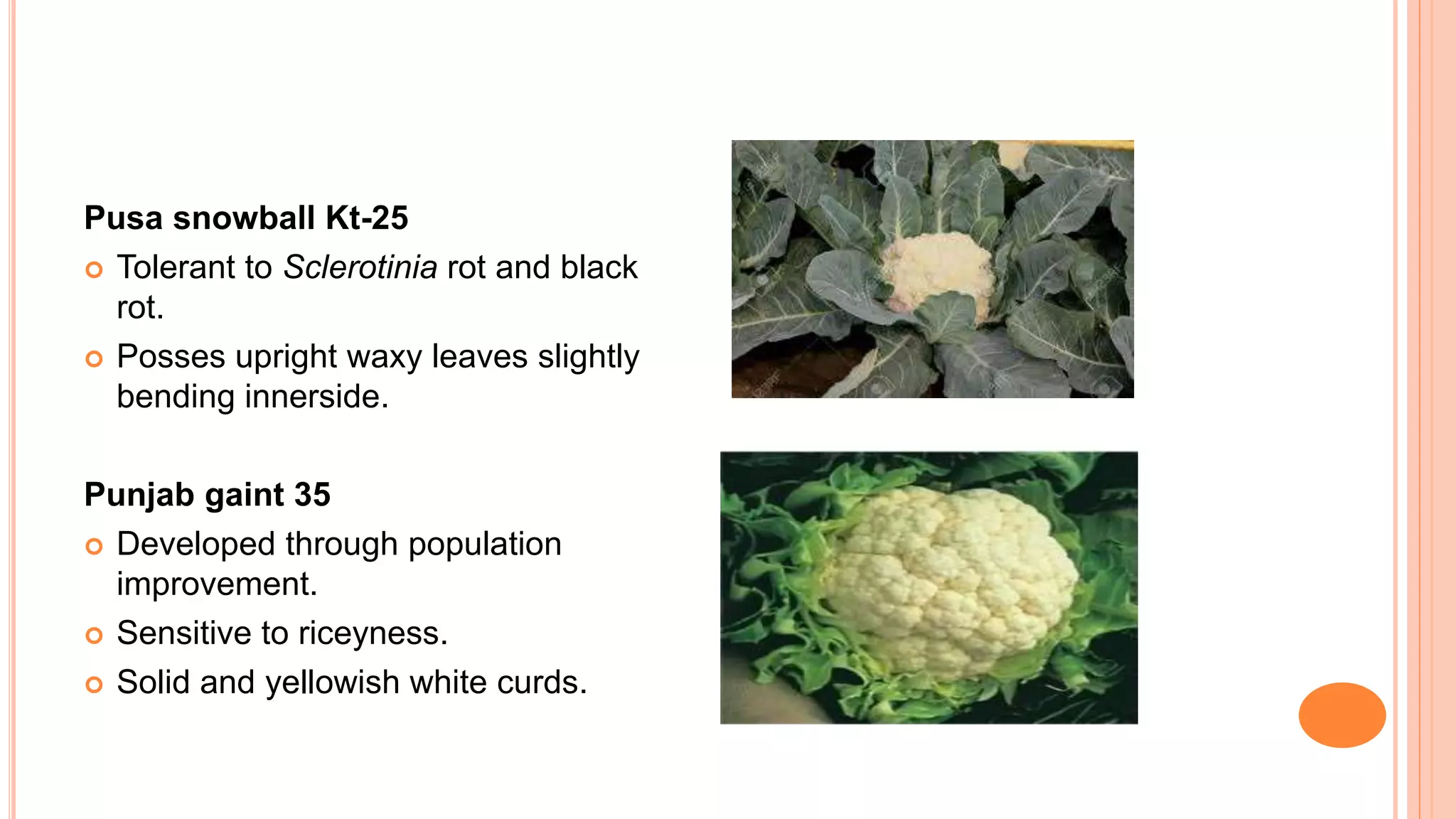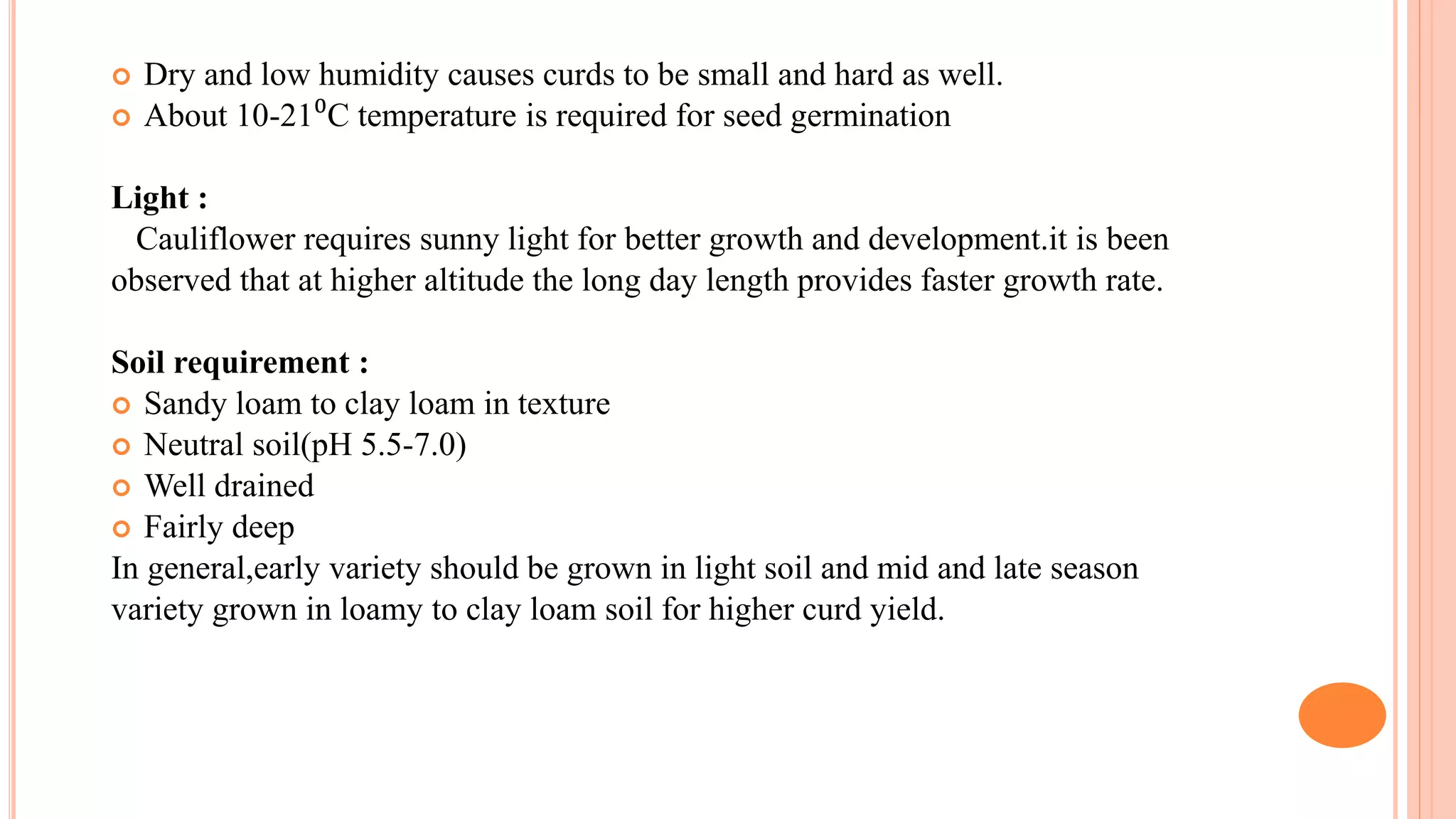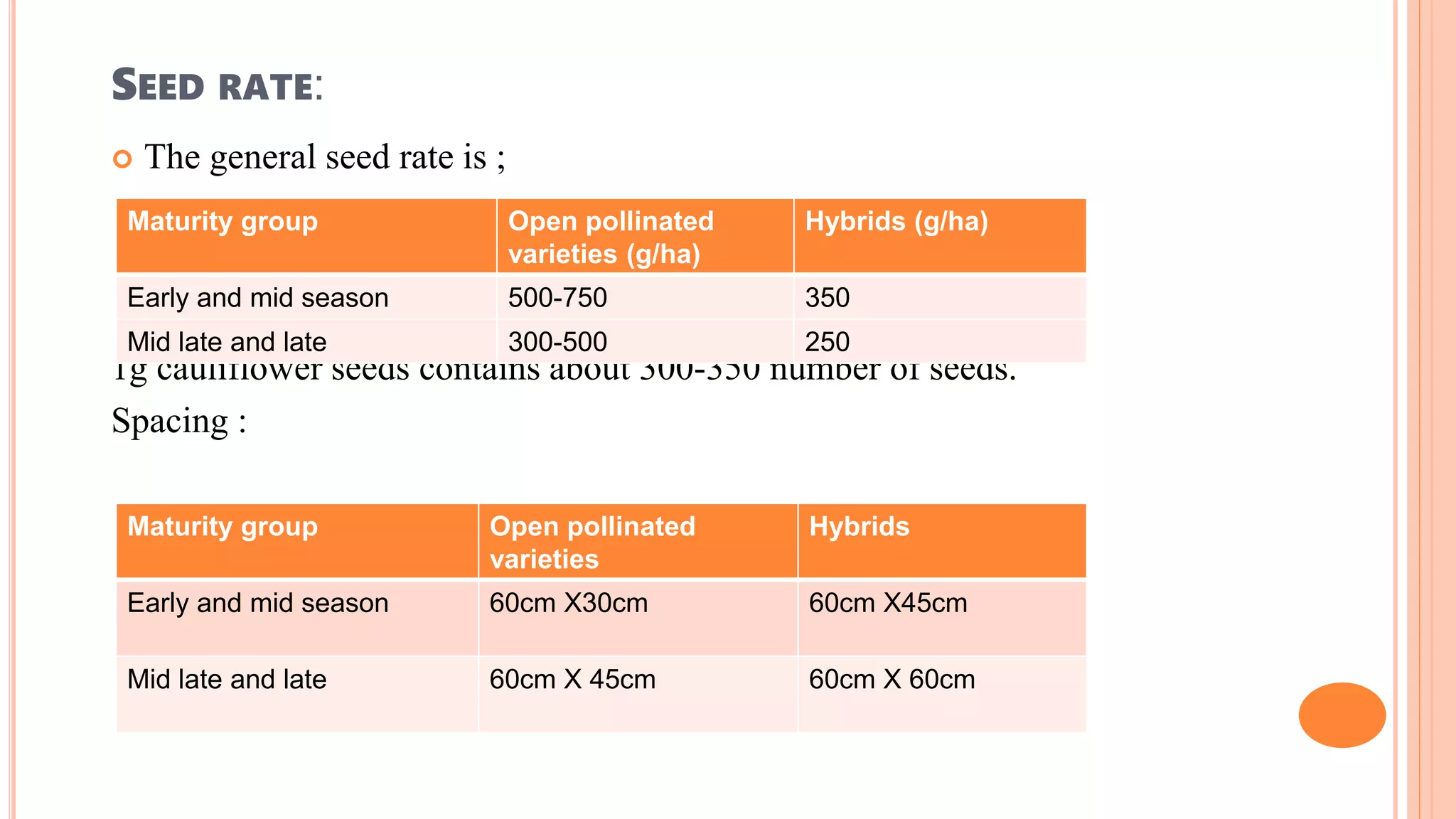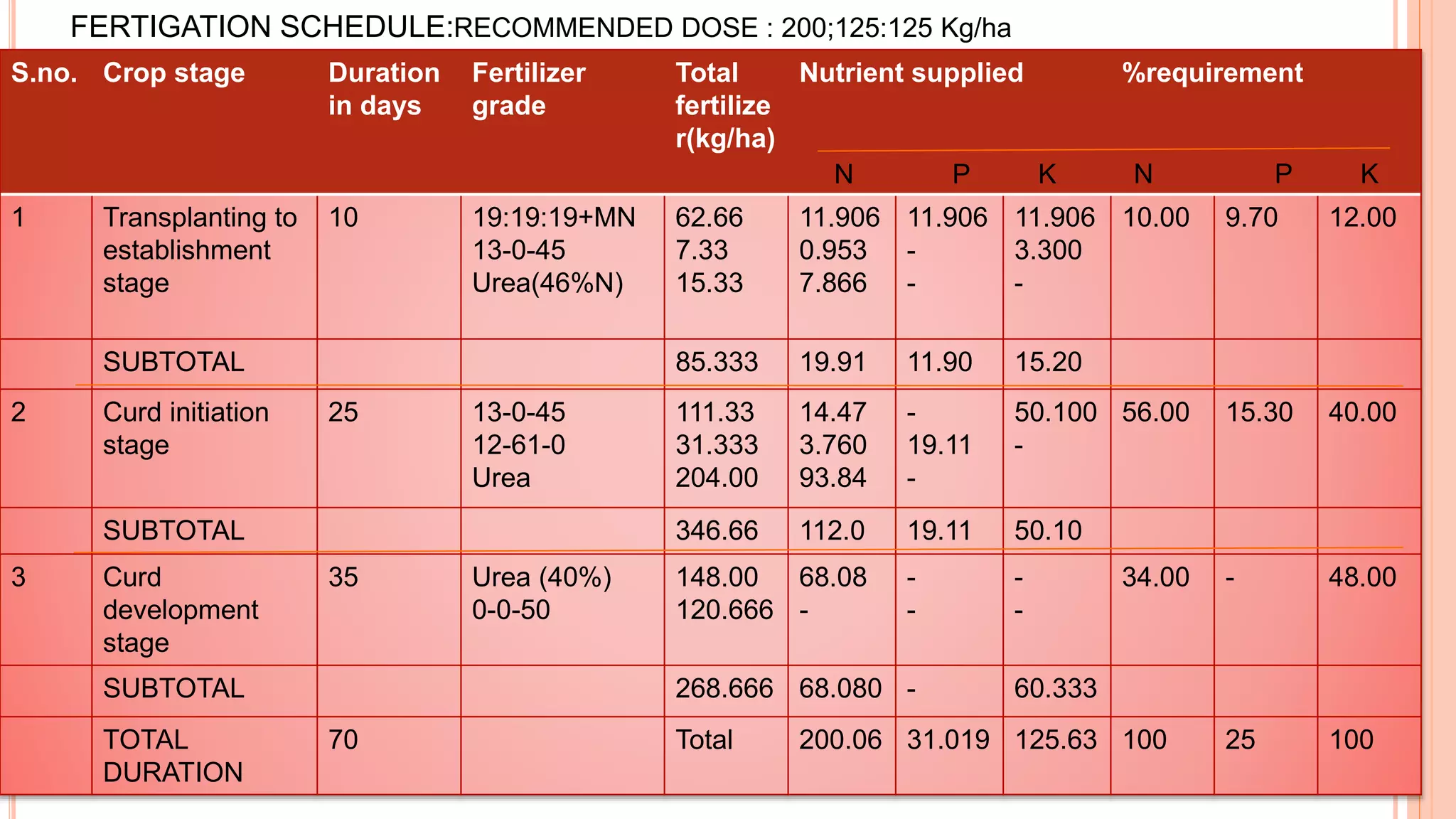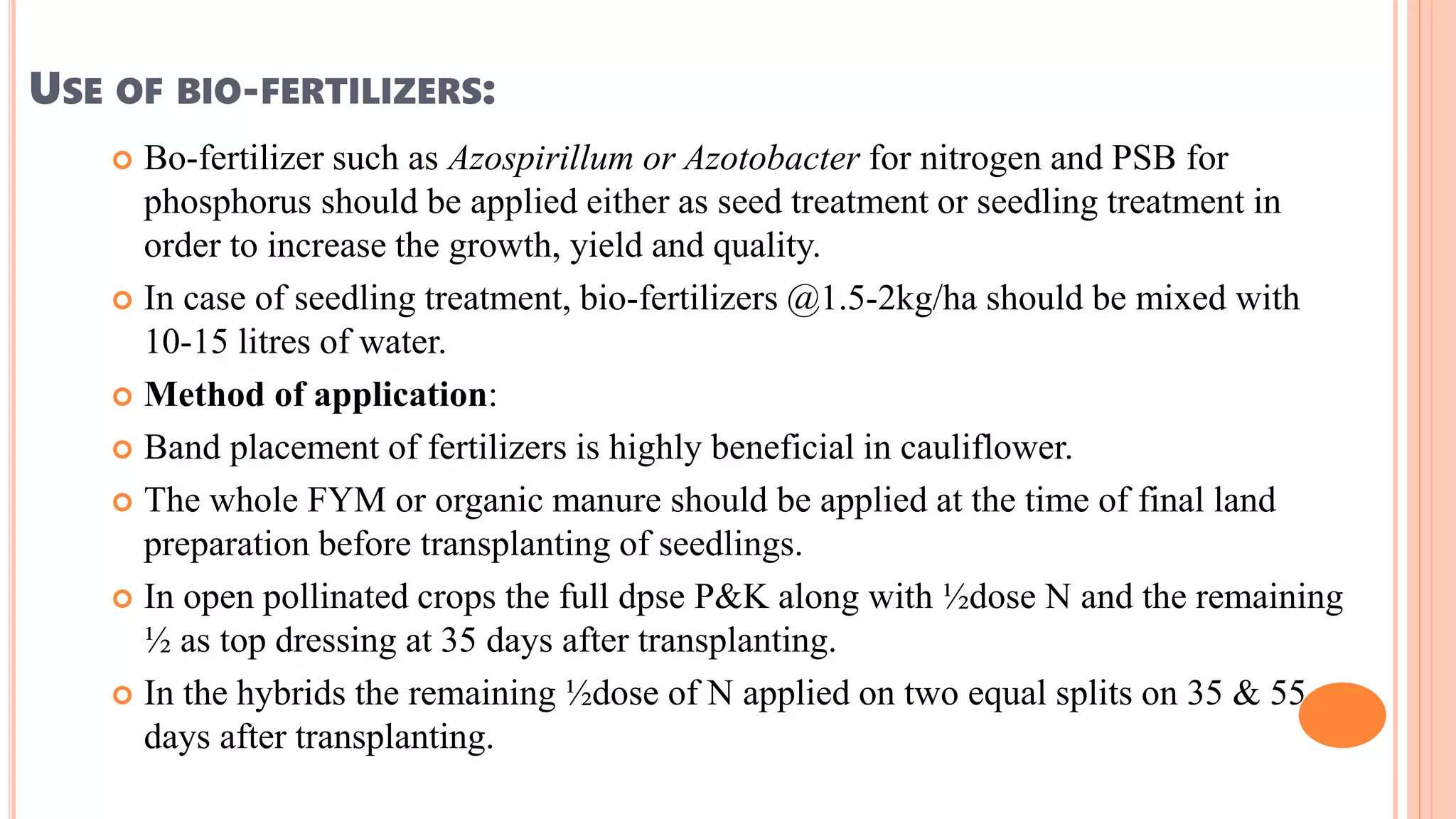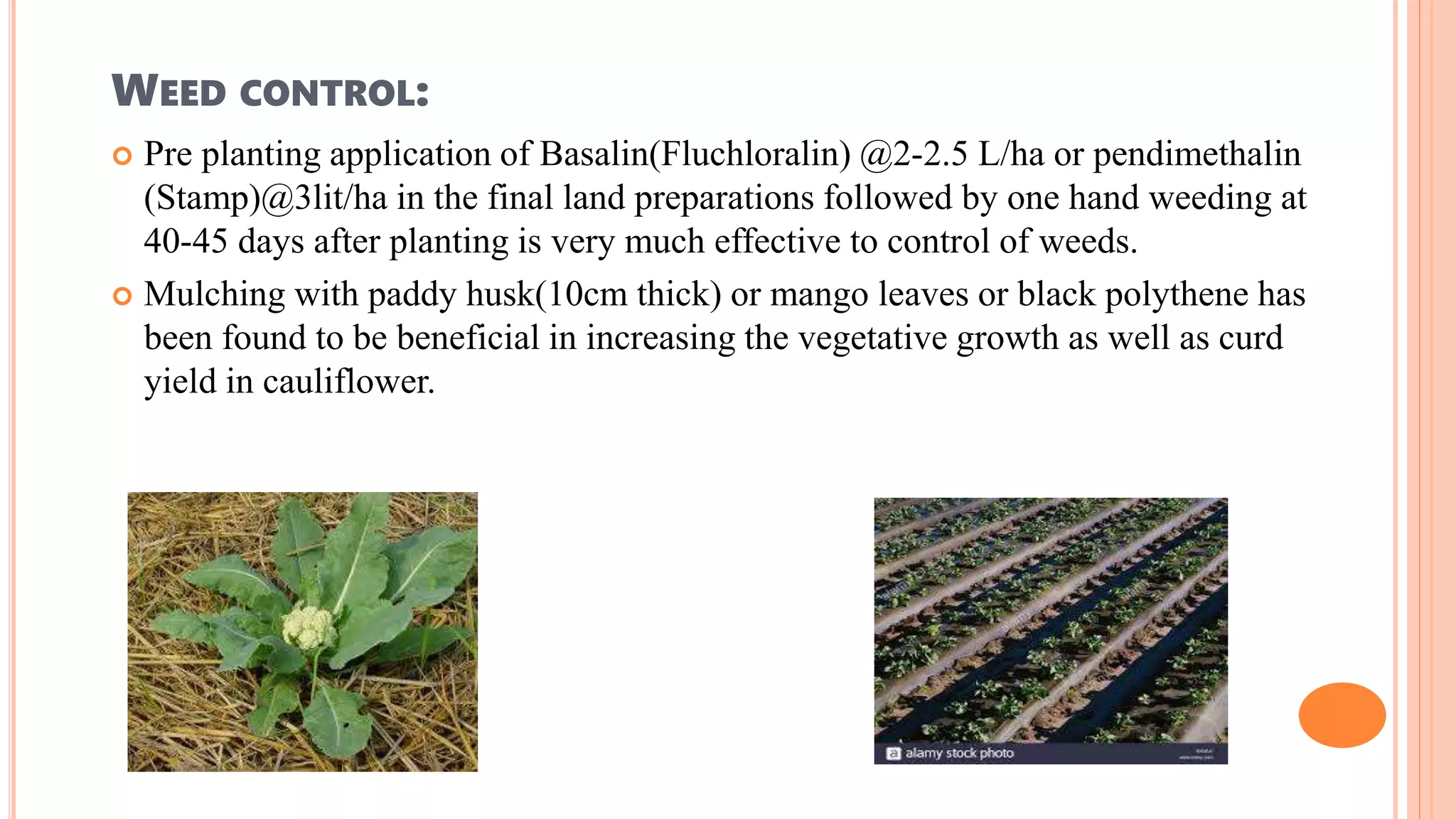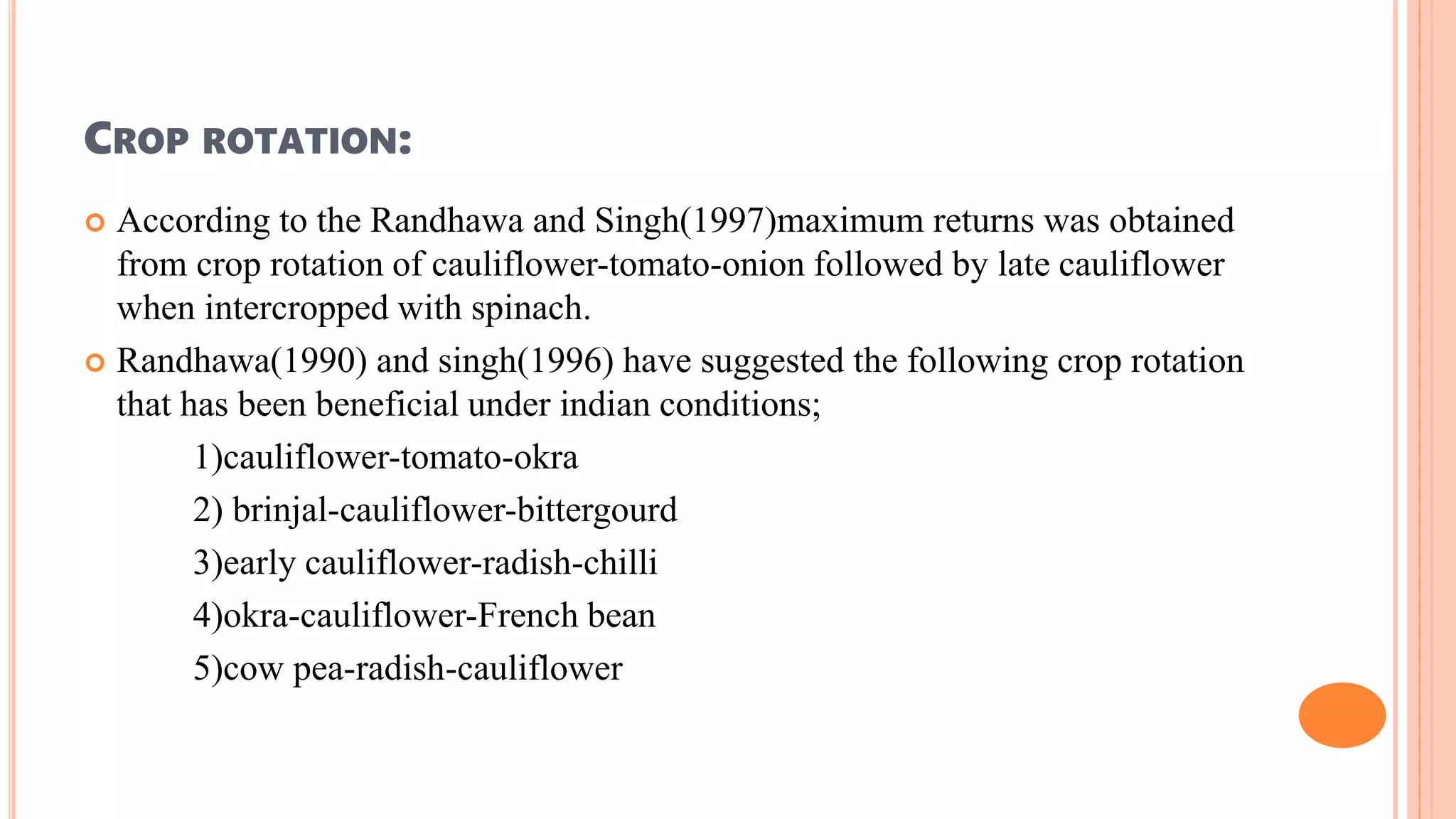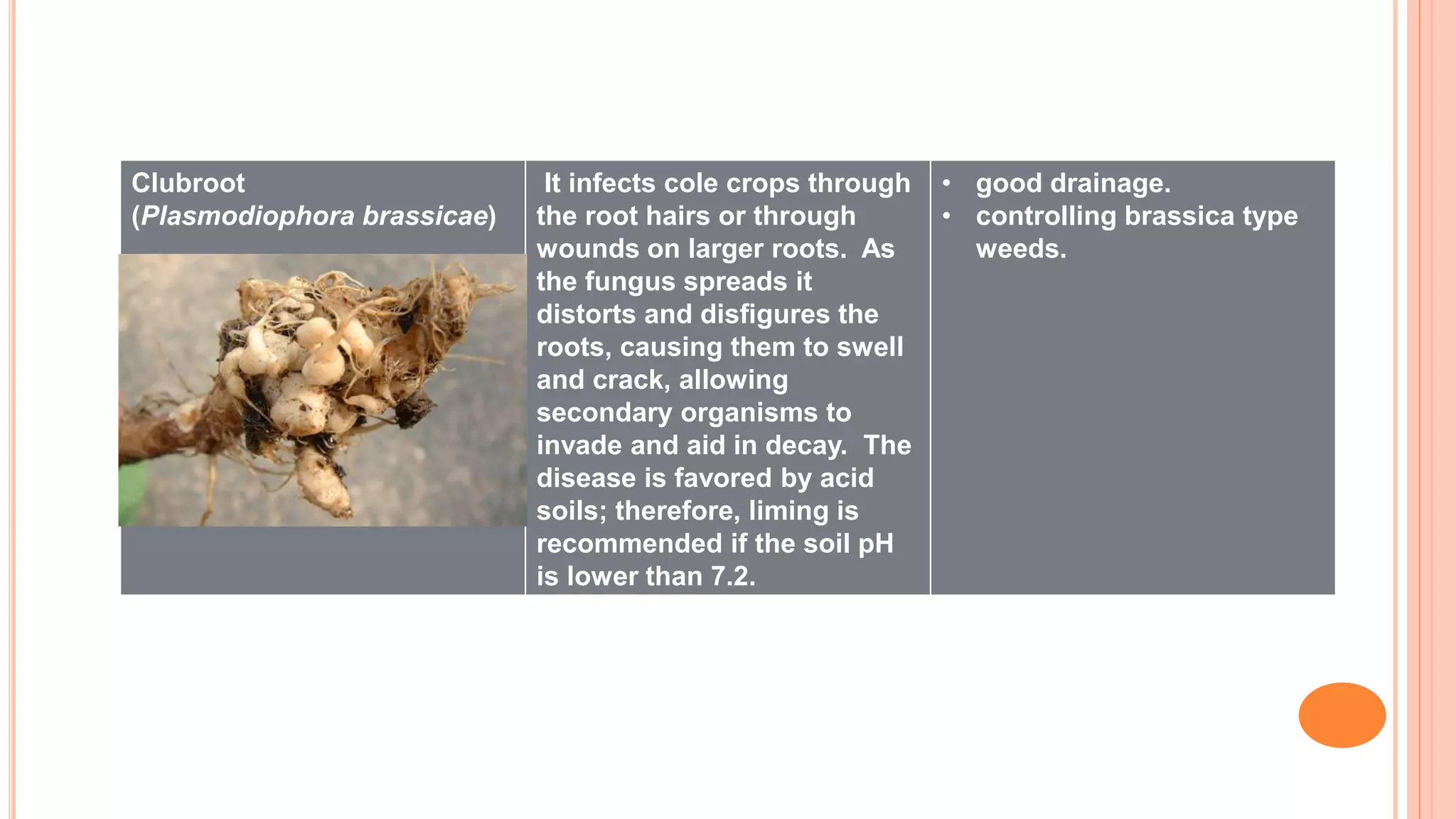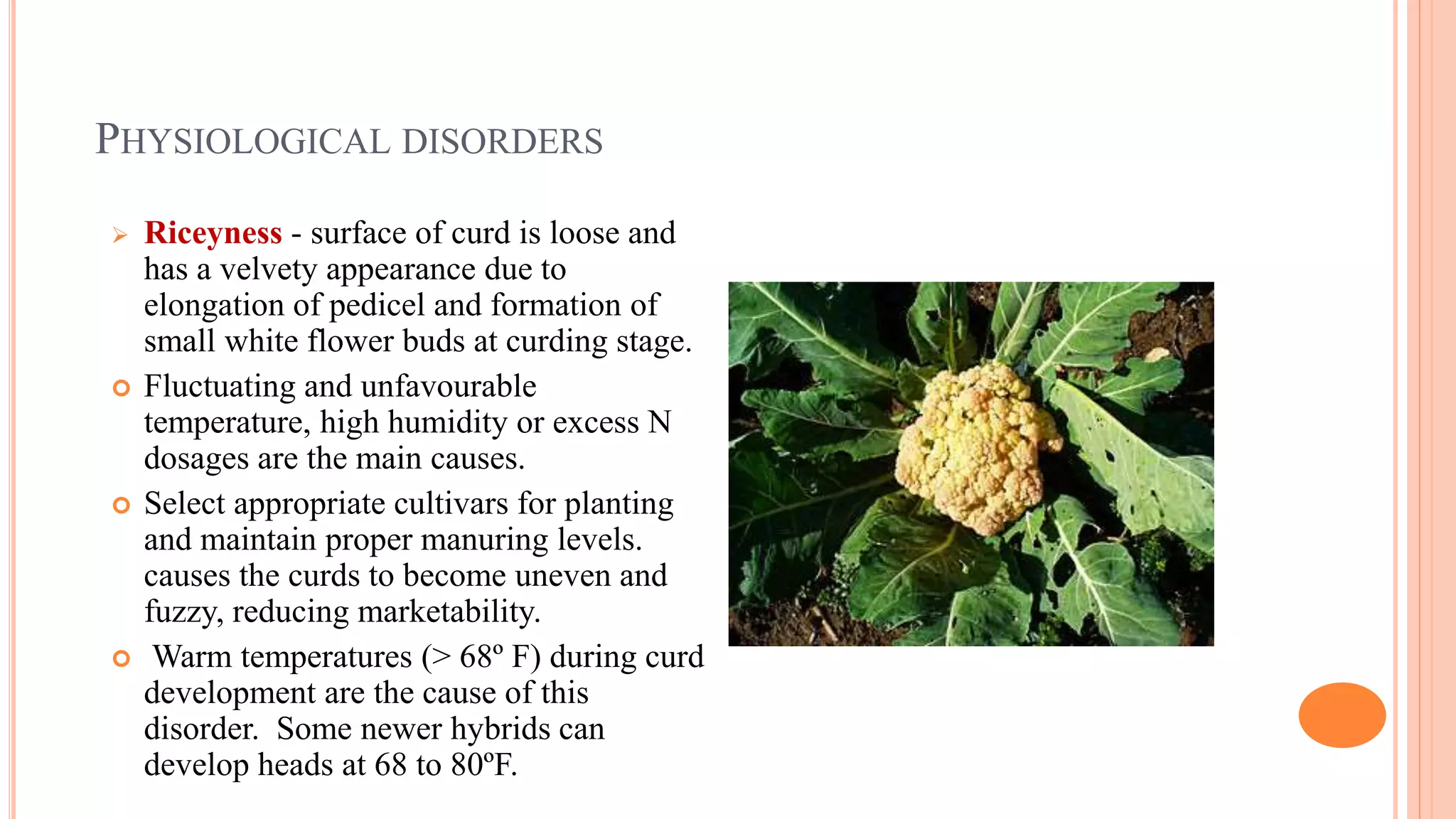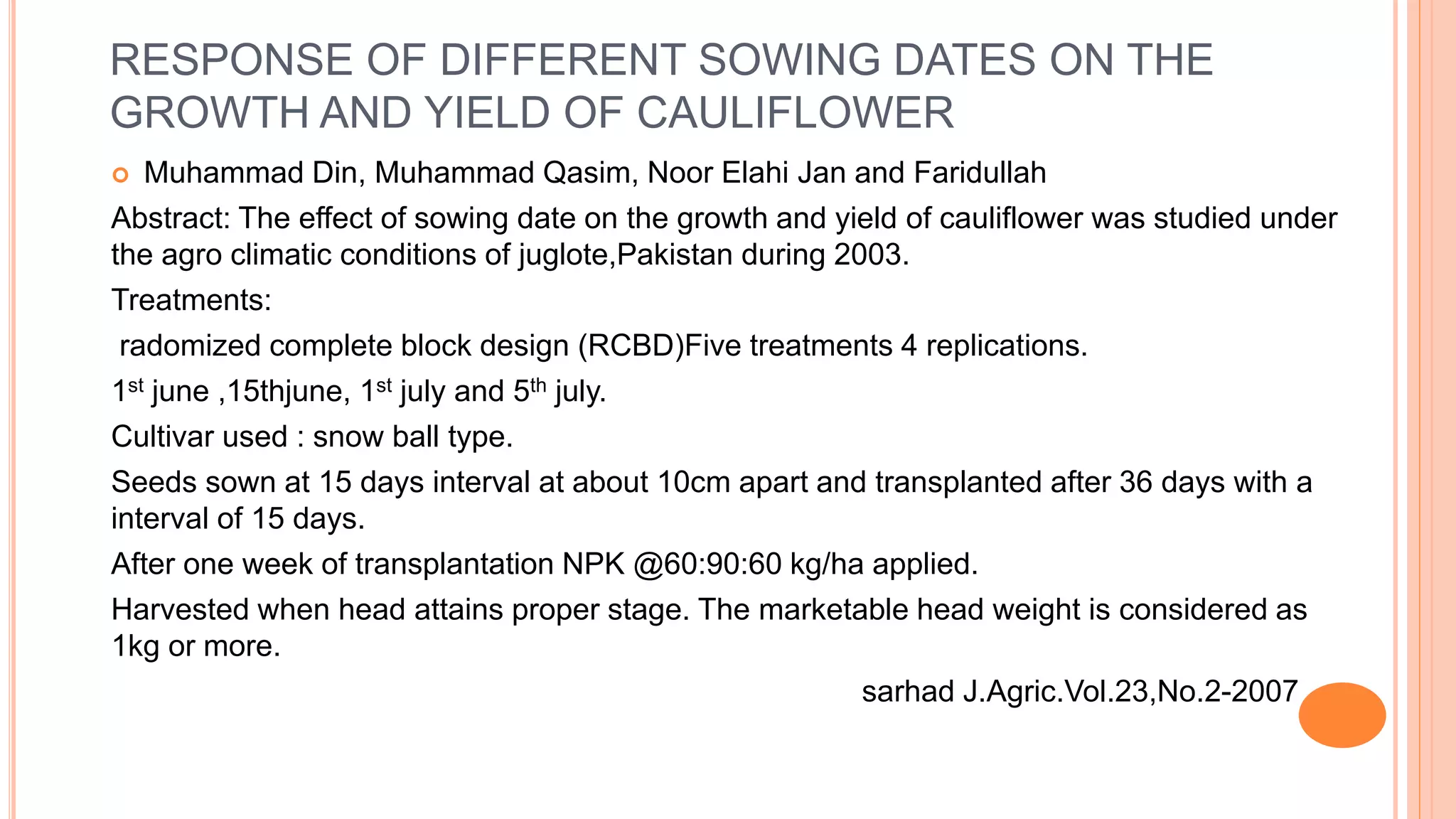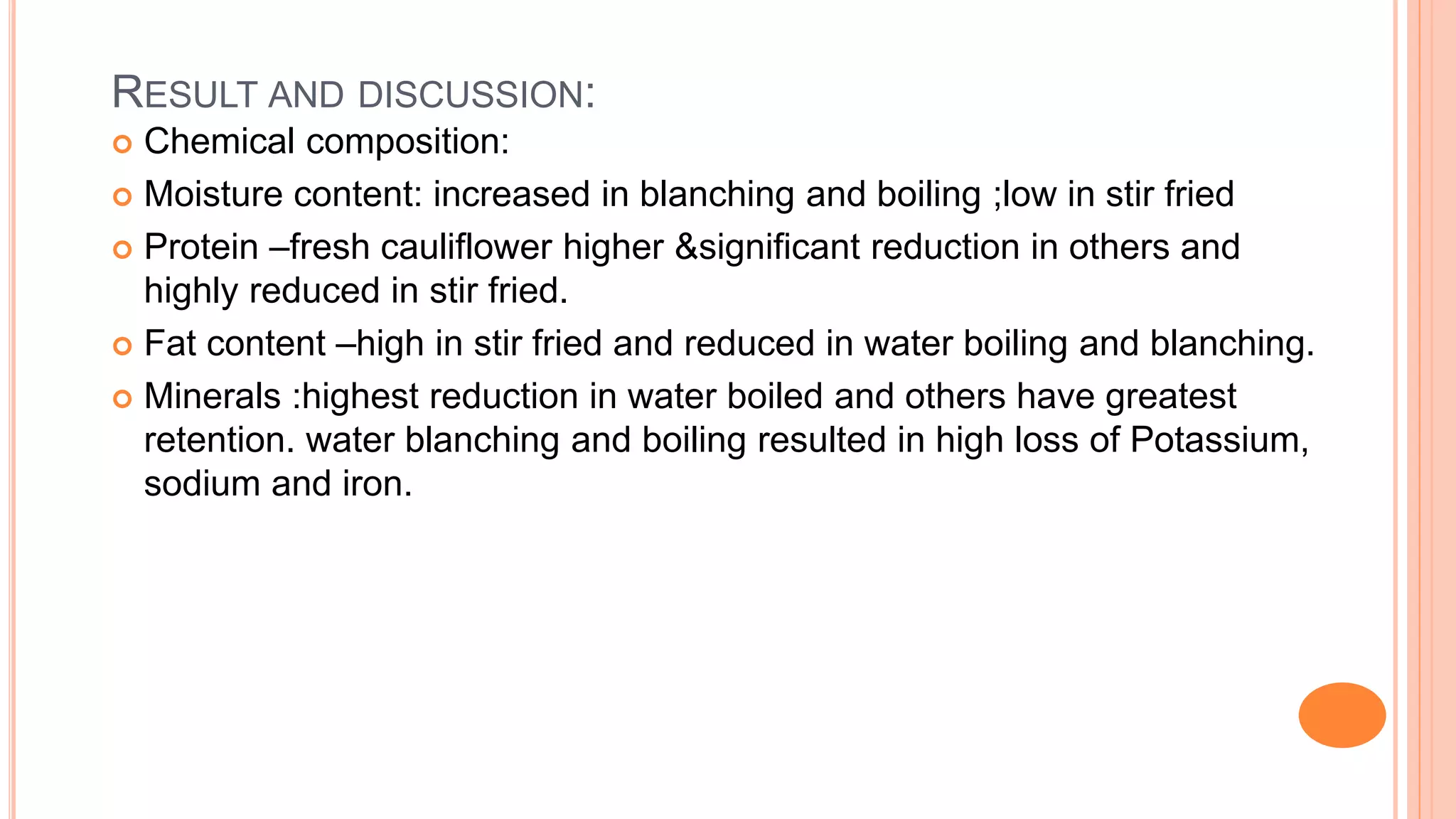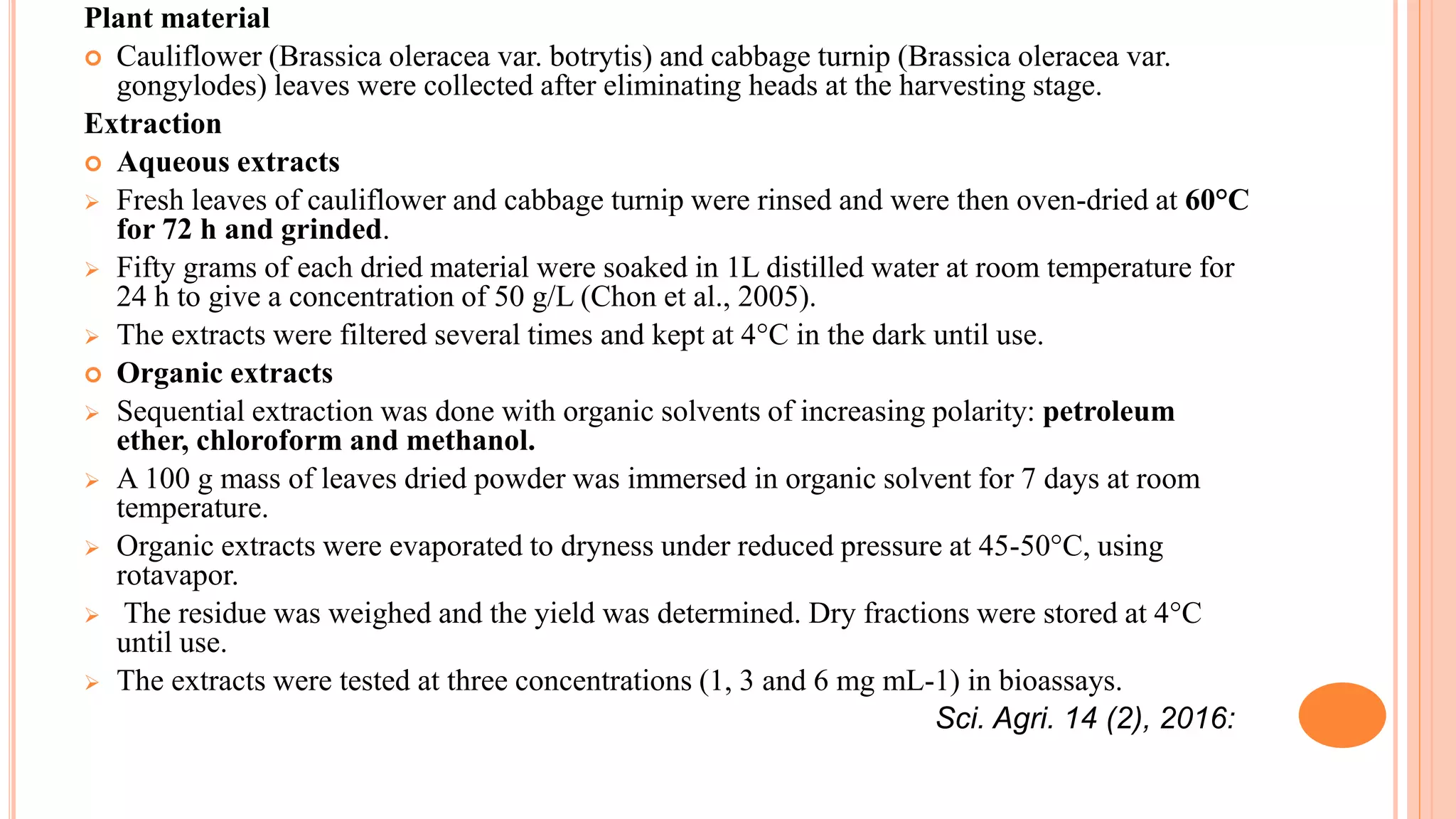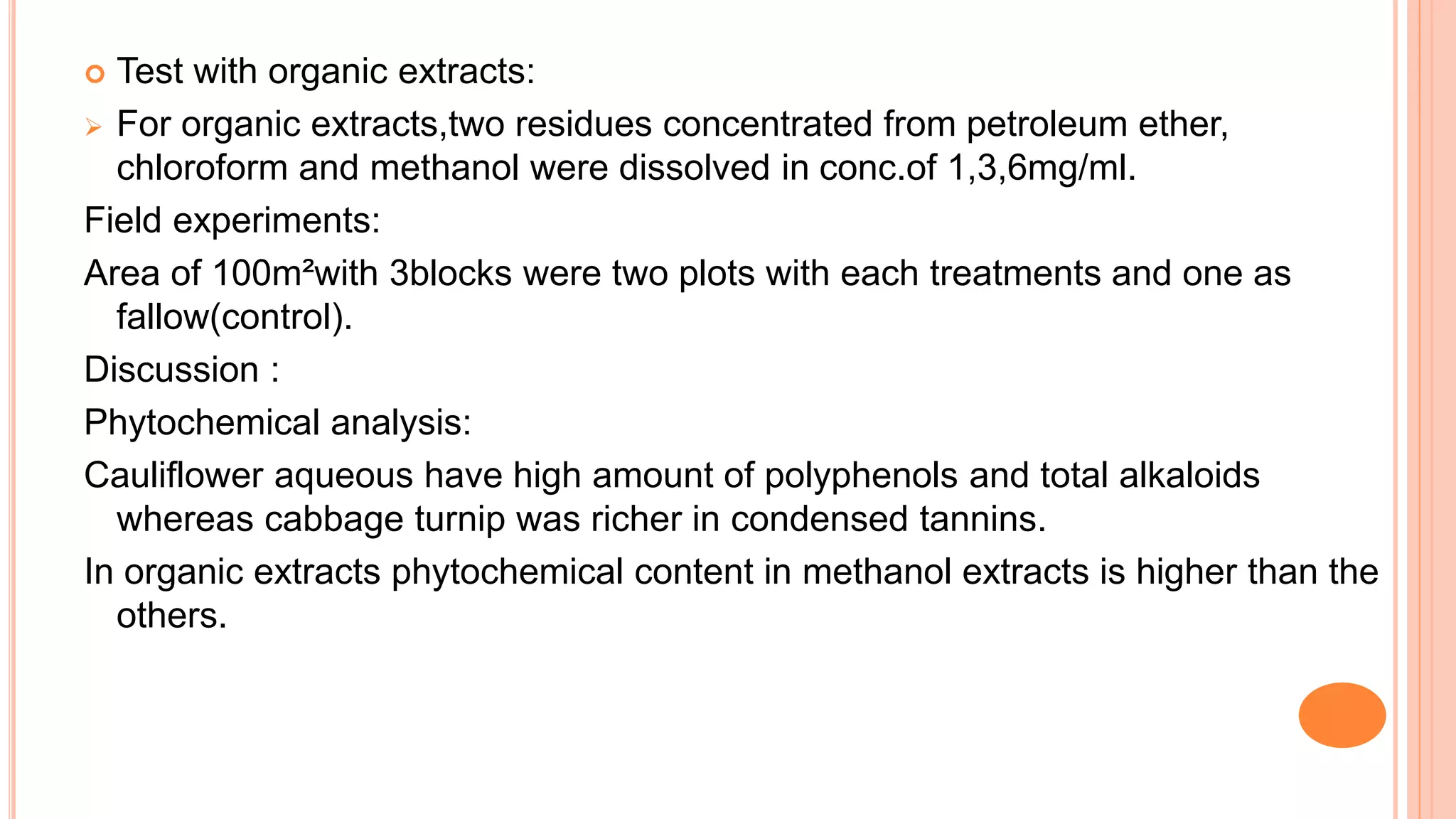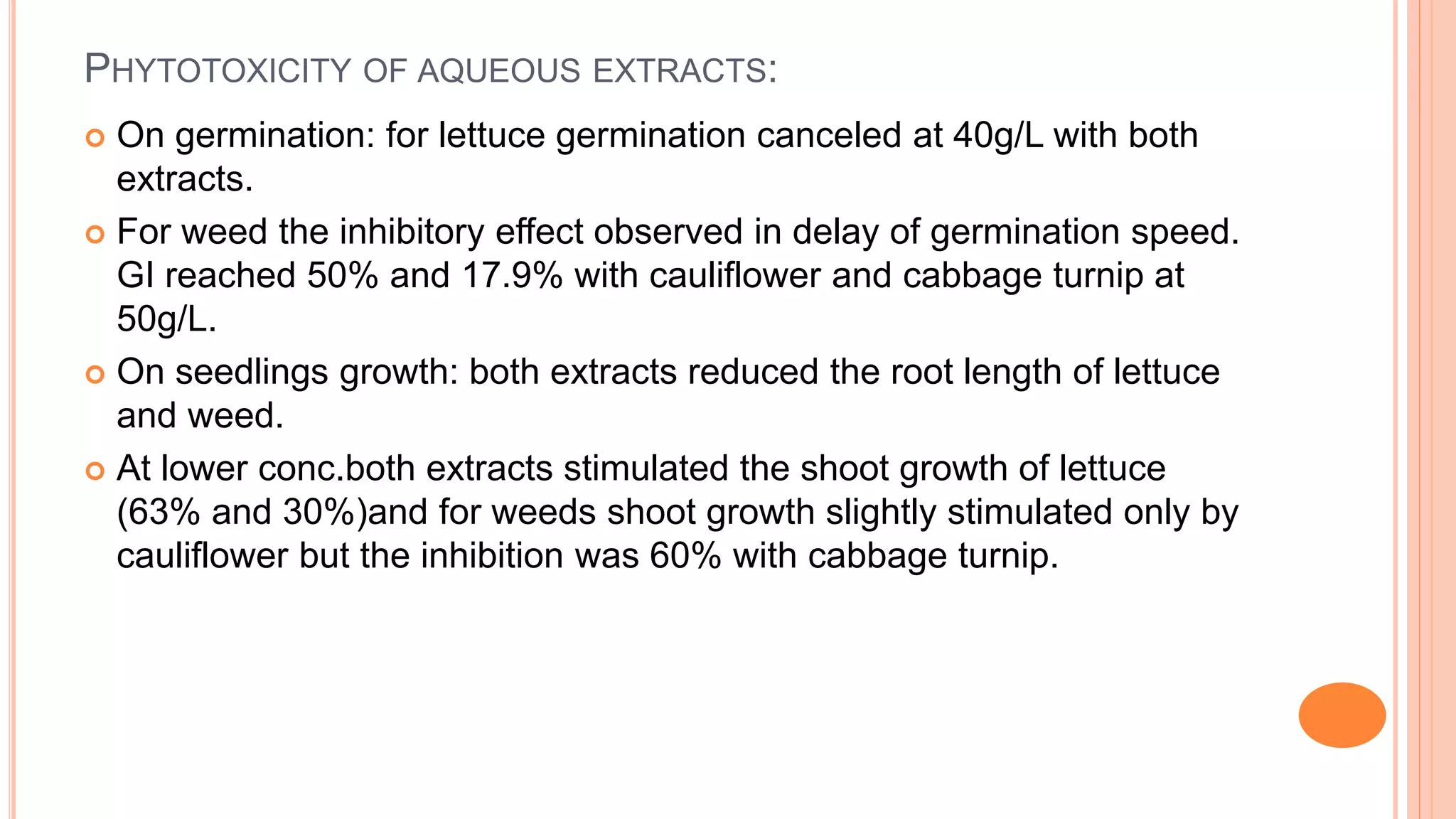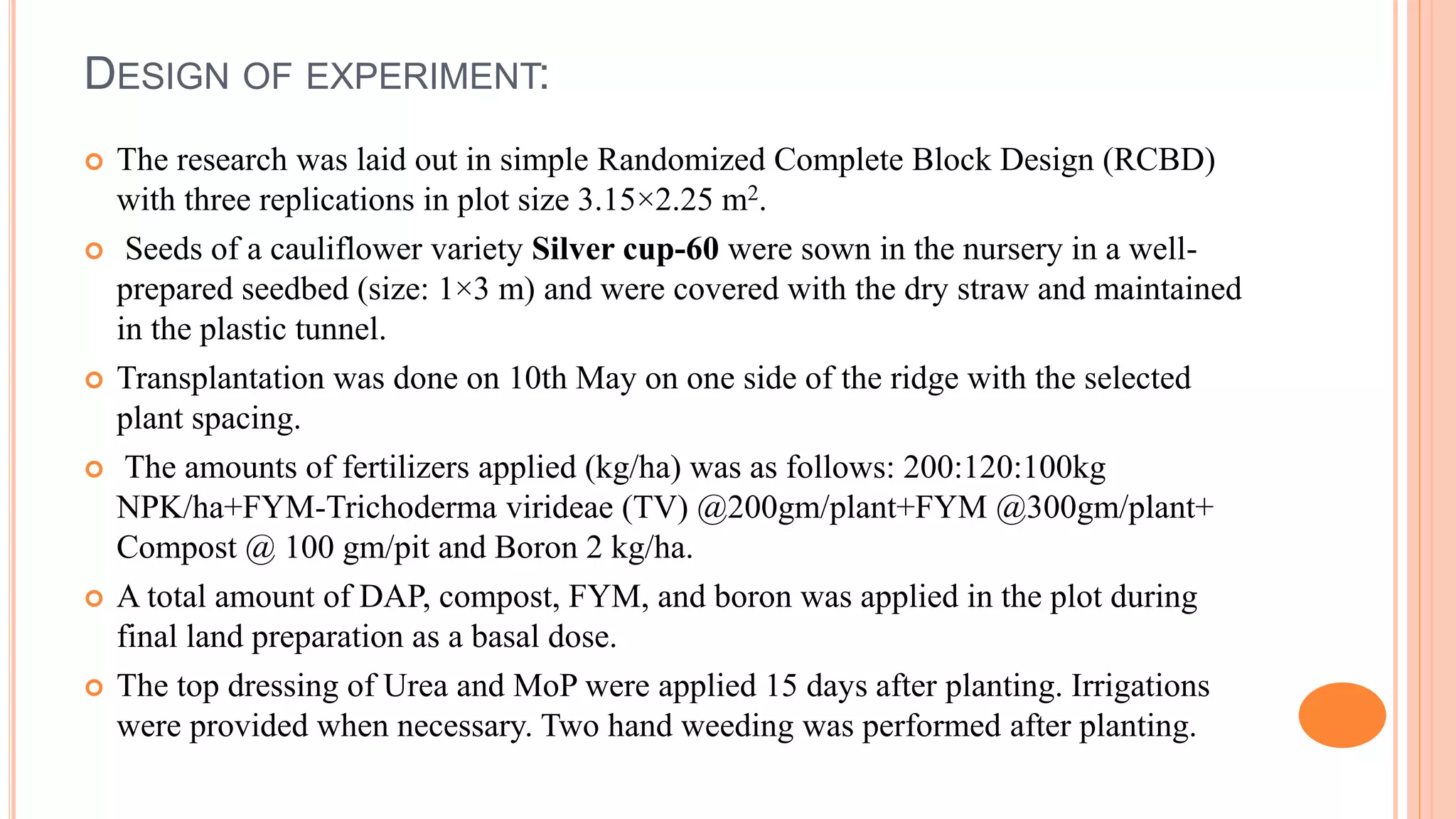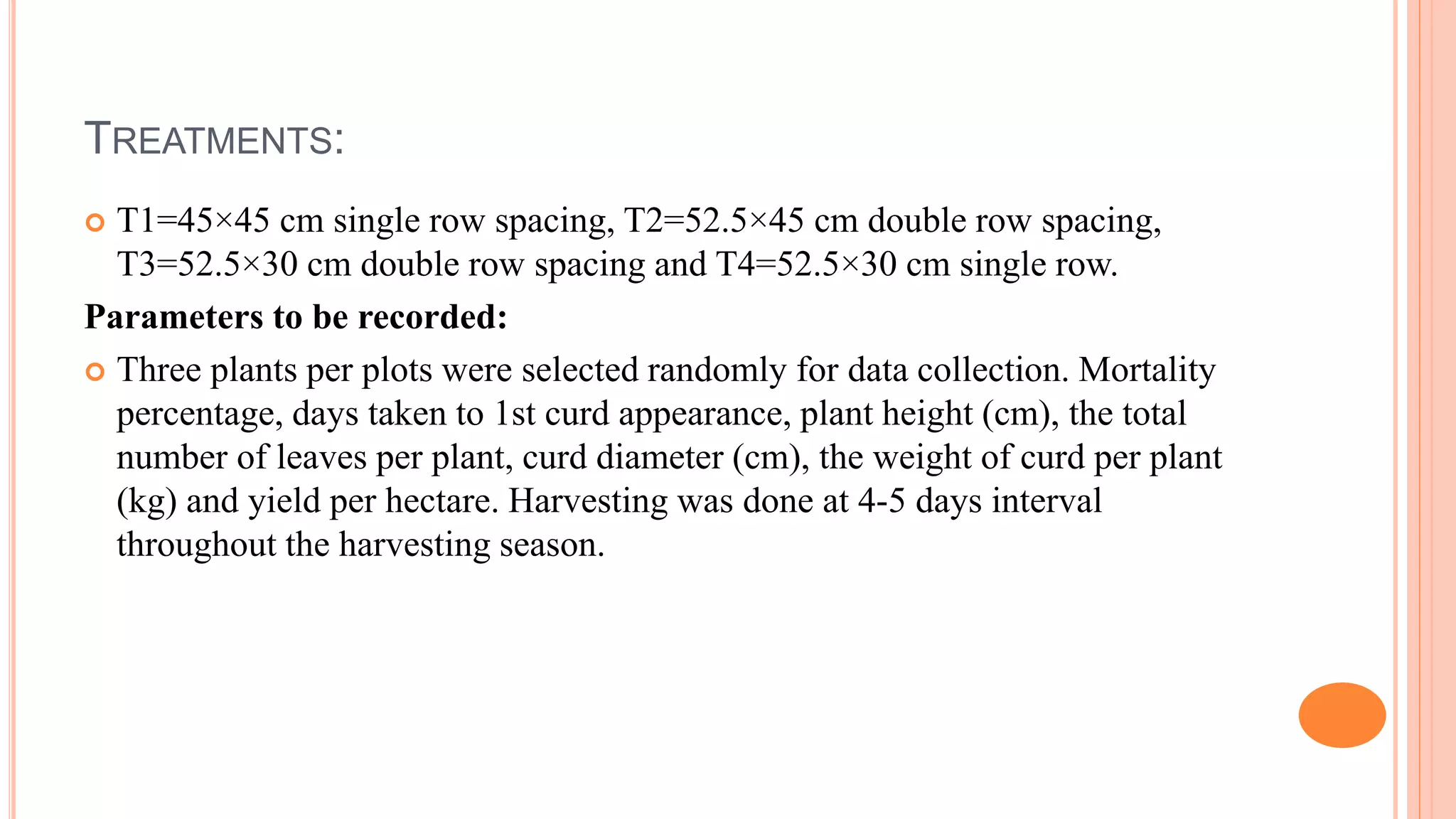This document provides information on the production technology of cauliflower. It discusses the introduction, botany, classification, varieties, climate requirements, nursery management, transplanting, nutrient management, and fertigation of cauliflower. The key points are:
1) Cauliflower was introduced to India from England in 1822 and is the largest producer worldwide, though productivity is low compared to other countries.
2) It is classified into four maturity groups depending on curd availability. Popular Indian varieties include Pusa Early, Pant Gobi-2, and Pusa Hybrid 2.
3) Cauliflower requires temperatures between 10-28°C, sunny light, and well





